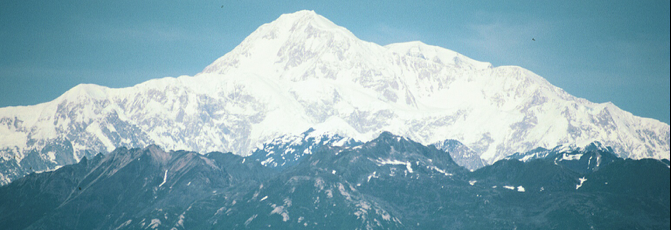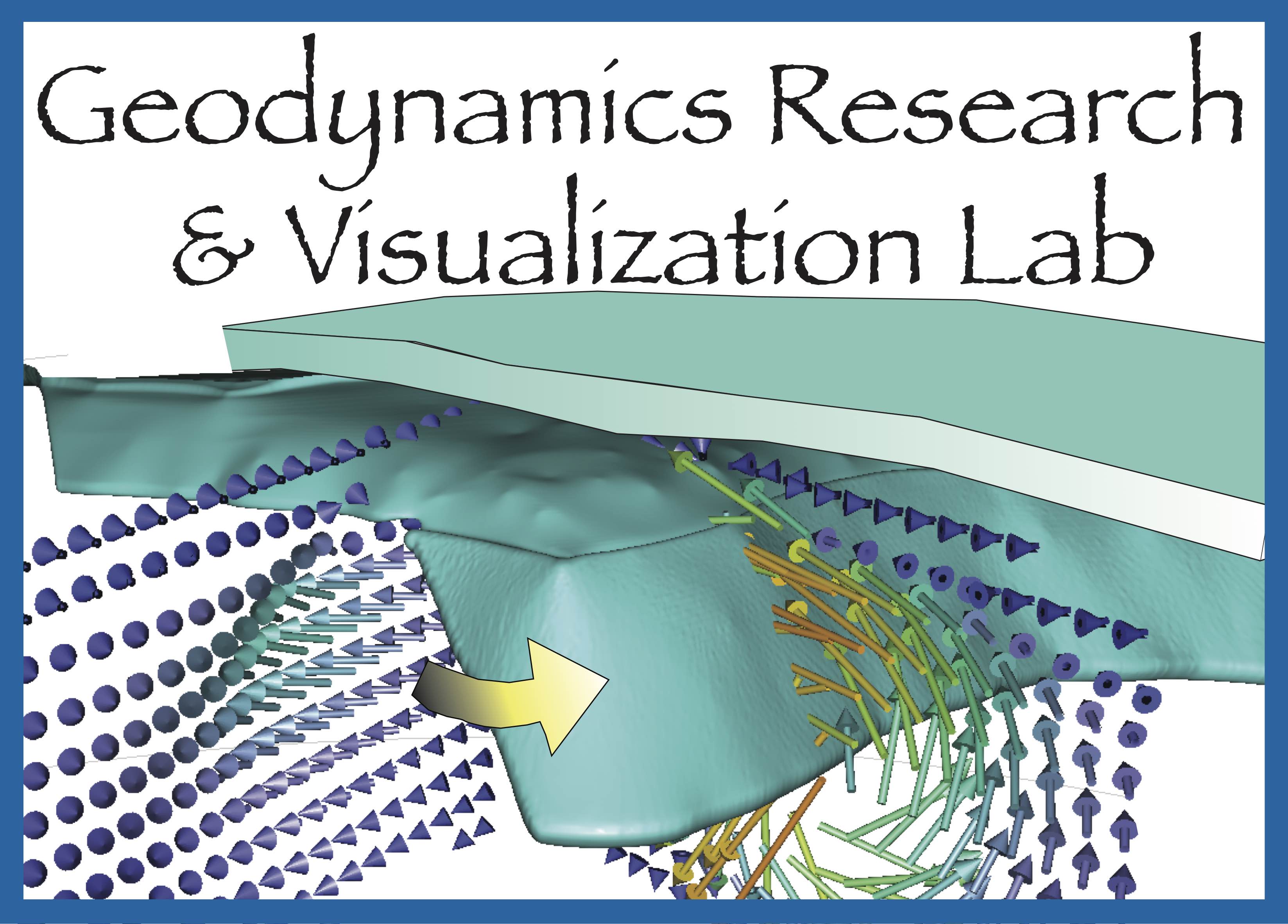Plate Tectonics and Geodynamic Modeling
(1) High-resolution 3D geodynamic modeling of plate boundaries
An active area of research in the group is modeling the dynamics governing how plate boundaries intersect one another and three-dimensional plate
boundary deformation.
Examples include modeling the flat slab subduction and slab edge in Alaska and modeling the Caribbean plate region including the Cocos-Nazca slab gap. The 3D models of Alaska show that the location of Mt. McKinley, the tallest mountain in North America, is due to the modern flat slab configuration and the presence of a major intra-continental fault, the Denali fault (e.g., Jadamec et al., EPSL 2013). One approach my group uses is to construct high-resolution geographically referenced 3D numerical models which are uniquely suited to investigate the role of flat slab subduction, continental scale faulting, slab tearing, and a non-linear
rheology on lithospheric and mantle deformation at plate margins (e.g., Jadamec and Billen, Nature 2010; Jadamec, Journal of Geodynamics 2016; Jadamec and Haynie, Tectonics 2017).
(2) Optimizing numerical modeling infrastructure for complex rheological problems
Observational and experimental constraints indicate plate boundaries and rheologic boundaries within the mantle are inherently three-dimensional, characterized by lateral and vertical strength variations, as well as changes in mineralogy and water content. An active area of research in the group is modeling how rheology in the mantle as well as anisotropic rheology in the lithosphere affect
plate boundary deformation and evolution (Jadamec and Billen, 2010; Jadamec et al., 2012; Sharples et al., PEPI 2016; Jadamec, 2016).
(3) Geologic Mapping of Crustal Deformation
Although much of the research in the group now is primarily computational geodynamics, I have my roots in field based work on crustal deformation.
Because significant portions of the cliff-forming outcrops in fold-and-thrust belts can be inaccessible, I developed a survey technique, in collaboration with my MS advisor Wesley Wallace, to obtain quantitative data on the geometry of thrust-truncated km-scale anticlines in the eastern Brooks Range in Alaska.
The survey data combined with results from field mapping led to a better understanding of the progression from asymmetric folding to the thrust-truncation of anticline forelimbs (Jadamec and Wallace, 2014).
The process of fold evolution and the interplay between folding and thrust-faulting in thin-skinned fold-and-thrust belt is a topic my group continues to examine.

|





